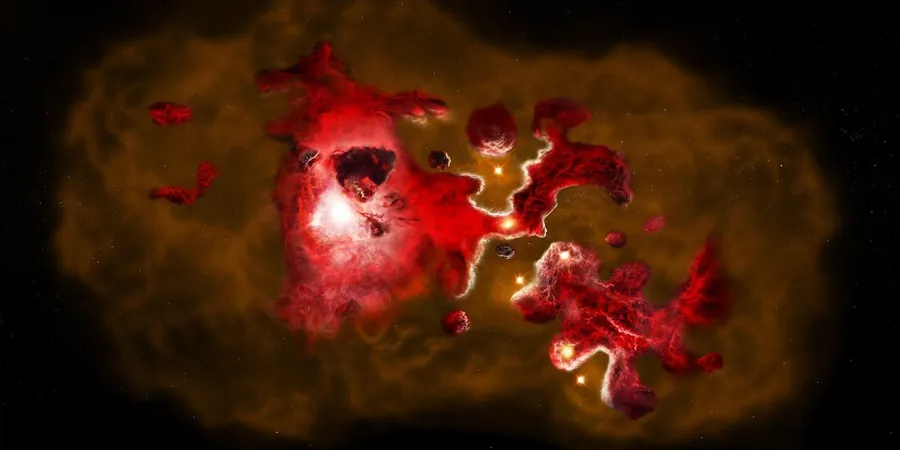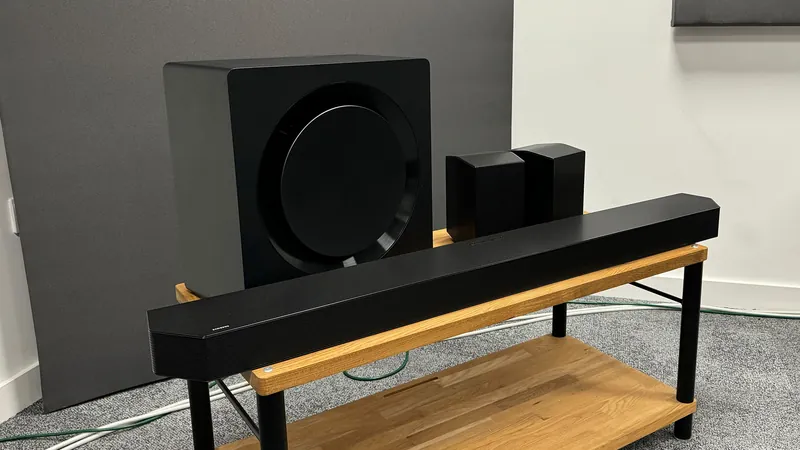
Unlocking the Future: How Attosecond Science Could Revolutionize Computers and Solar Cells
2025-01-15
Author: Daniel
Introduction
In a groundbreaking exploration of matter at incredibly tiny time scales, attosecond science is poised to revolutionize our understanding of the universe and significantly advance technology in computing and renewable energy. By studying phenomena on the scale of attoseconds—one quintillionth of a second—scientists are opening doors to solve some of humanity's most pressing challenges, from climate change to advanced medical treatments.
What is Attosecond Science?
Attosecond science, recently highlighted as a pivotal field in the 2023 Nobel Prize in Physics, utilizes extraordinarily short laser pulses to investigate electron movement in real time. This innovative approach allows physicists to capture and visualize electron dynamics, which are fundamental in various materials, including those critical for next-gen electronics and clean energy solutions.
Record Achievements and Research Developments
The quest for shorter and more intense laser pulses has been relentless. The current world record for the shortest light pulse stands at an astonishing 43 attoseconds, achieved in 2017 by researchers at ETH Zurich. Such rapid bursts of energy not only enable scientists to observe electrons but also uncover the intricate mechanics behind various materials, such as nanostructures and biomolecules. This has ignited new research in fields like attochemistry and attobiology, leading to groundbreaking applications in technology and medicine.
Applications in Solar Energy
One of the most promising applications of attosecond science lies in the realm of solar energy. By examining the initial reactions that occur when light strikes solar cells, researchers aim to optimize the materials used, potentially increasing their efficiency drastically. Understanding these interactions at the attosecond scale may lead to advances in organic photovoltaics, which could transform solar power technologies into more efficient, sustainable options for energy.
Implications for Computing
Moreover, the implications of attosecond science extend into the future of computing. Researchers are increasingly interested in combining attosecond science with the rapidly evolving field of quantum computing. Quantum computers, which leverage principles such as superposition and entanglement, offer immense processing capabilities far beyond conventional technologies. When integrated with attosecond research, these systems could enhance computational power and accelerate complex problem-solving, marking the dawn of a new era in computing.
Innovative Experiments in Quantum Computing
In several innovative experiments, scientists have demonstrated the control of entanglement and coherence of qubits—quantum bits essential for quantum computing—using attosecond pulses. Such breakthroughs could lead to more stable and efficient quantum systems, opening doors to solutions that have been previously unattainable.
Challenges and Collaborative Efforts
While the future appears bright, the attosecond science community is not without its debates. Researchers often disagree on some fundamental aspects, prompting initiatives such as the Quantum Battles Workshops. These discussions foster collaboration among early-career scientists and allow for constructive dialogues that could lead to significant advancements in the field.
Conclusion
In summary, attosecond science offers a promising frontier in our quest to innovate vital technologies. From enhancing solar cells to paving the way for super-fast quantum computers, the potential applications are vast and transformative. As we continue to unlock the mysteries of this ultrafast realm, the outcomes may inspire groundbreaking solutions that will shape our world in the coming years. Stay tuned as we witness the unfolding of this exciting scientific journey!





 Brasil (PT)
Brasil (PT)
 Canada (EN)
Canada (EN)
 Chile (ES)
Chile (ES)
 Česko (CS)
Česko (CS)
 대한민국 (KO)
대한민국 (KO)
 España (ES)
España (ES)
 France (FR)
France (FR)
 Hong Kong (EN)
Hong Kong (EN)
 Italia (IT)
Italia (IT)
 日本 (JA)
日本 (JA)
 Magyarország (HU)
Magyarország (HU)
 Norge (NO)
Norge (NO)
 Polska (PL)
Polska (PL)
 Schweiz (DE)
Schweiz (DE)
 Singapore (EN)
Singapore (EN)
 Sverige (SV)
Sverige (SV)
 Suomi (FI)
Suomi (FI)
 Türkiye (TR)
Türkiye (TR)
 الإمارات العربية المتحدة (AR)
الإمارات العربية المتحدة (AR)